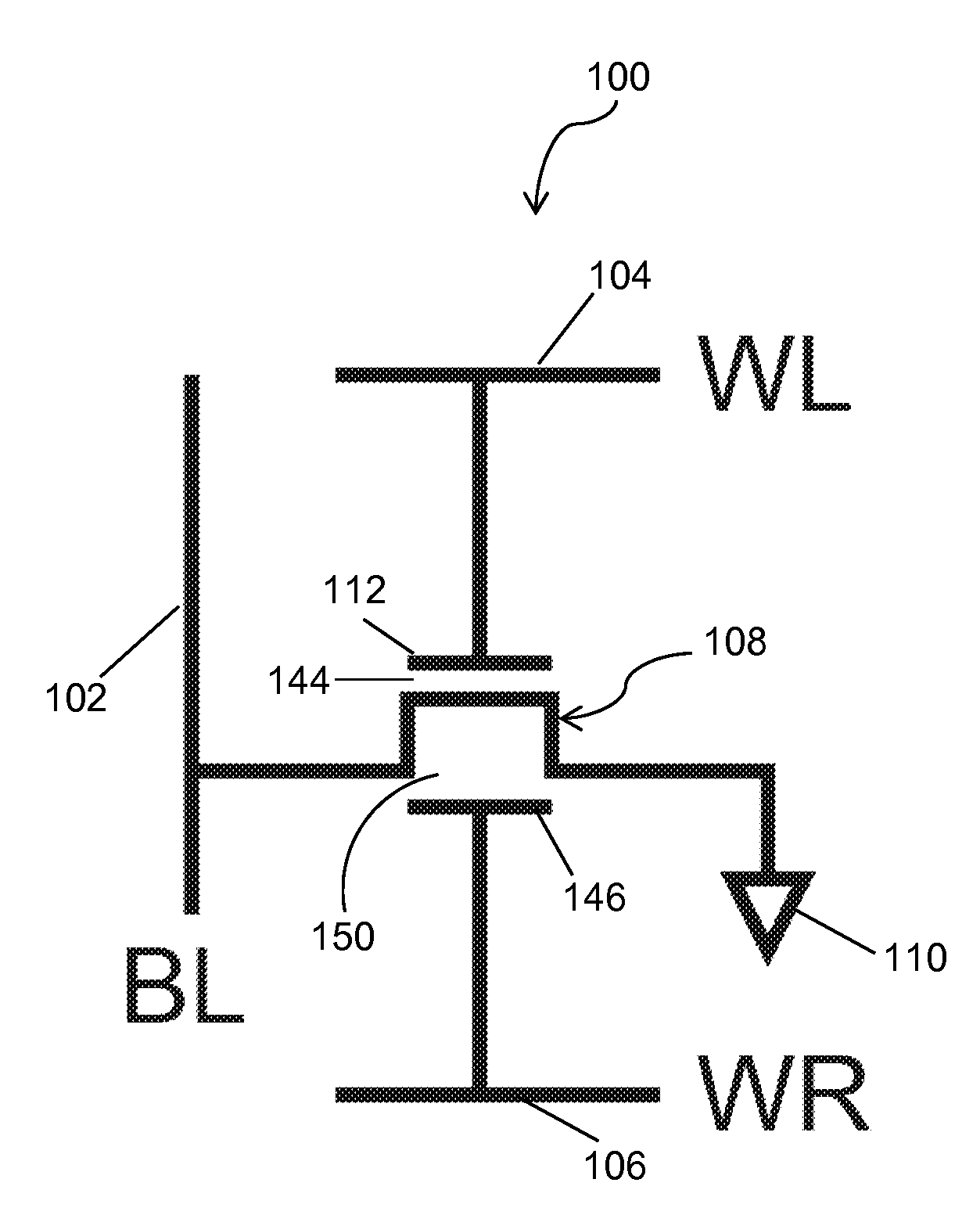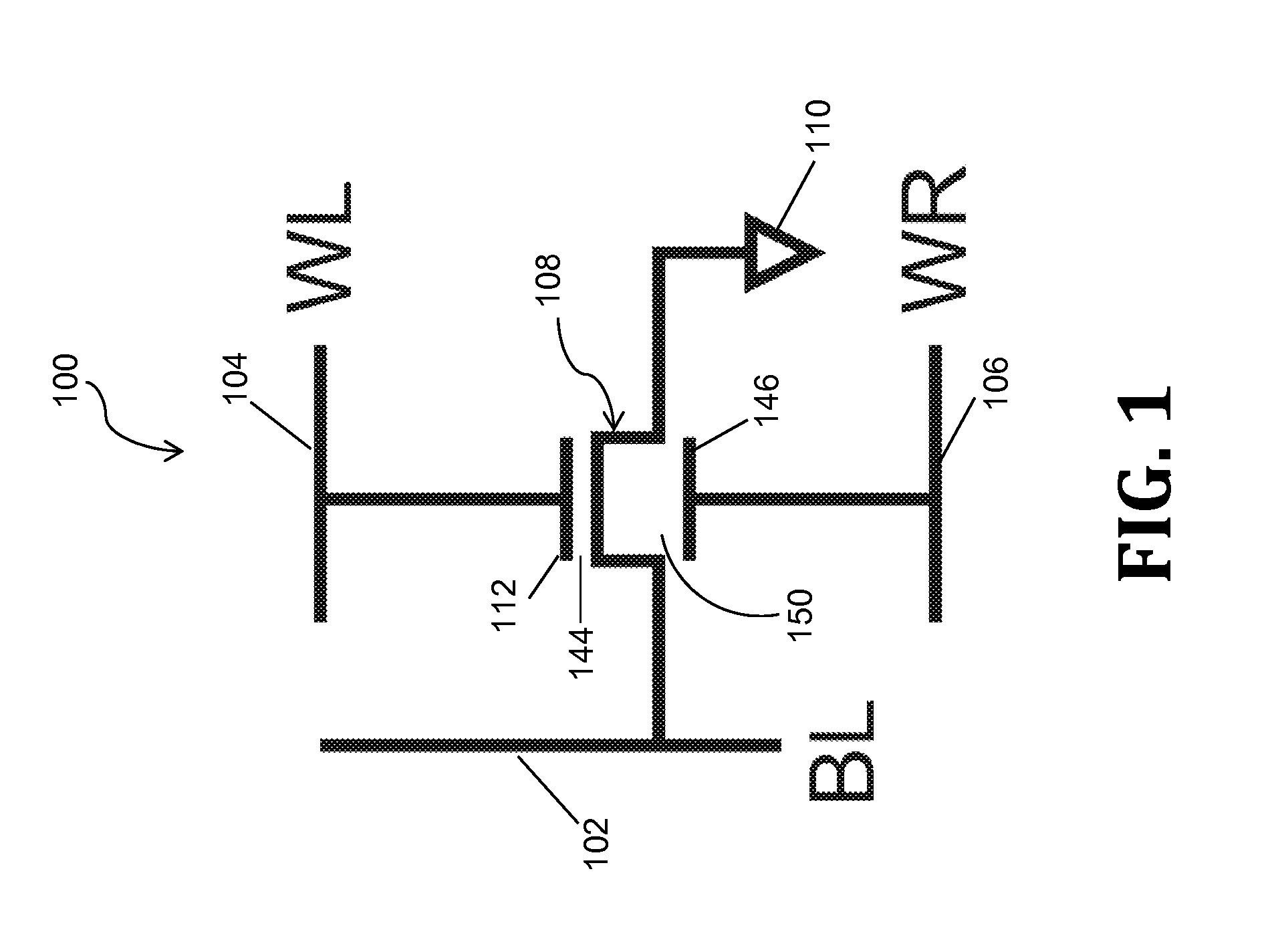Single transistor random access memory using ion storage in two-dimensional crystals
a two-dimensional crystal and random access technology, applied in the field of universal memory, can solve the problems of low write speed and write/erase degradation, flash memory has its limitations, and the reliability of the definition of the on and off state is less reliabl
- Summary
- Abstract
- Description
- Claims
- Application Information
AI Technical Summary
Benefits of technology
Problems solved by technology
Method used
Image
Examples
Embodiment Construction
[0011]The following description of example apparatus and methods is not intended to limit the scope of the disclosure to the precise form or forms detailed herein. Instead the following description is intended to be illustrative so that others may follow its teachings.
[0012]An example single-transistor random access memory (RAM) cell is disclosed for high-density data storage on two-dimensional (2D) crystals like graphene, for example. It will be appreciated that any 2D crystal or other similar structure may be utilized as desired. In one example, a data storage mechanism is contained within a specialized transistor. The transistor may function as a memory without the need for an added storage capacitor or resistance-change element, allowing for a device of atomic proportions. In one example, the single-transistor RAM cell includes a bit line, a word line, and a write line. Similar to flash memory, the bit line and word line may be used to address the 2D crystal transistor in an arr...
PUM
 Login to View More
Login to View More Abstract
Description
Claims
Application Information
 Login to View More
Login to View More - R&D
- Intellectual Property
- Life Sciences
- Materials
- Tech Scout
- Unparalleled Data Quality
- Higher Quality Content
- 60% Fewer Hallucinations
Browse by: Latest US Patents, China's latest patents, Technical Efficacy Thesaurus, Application Domain, Technology Topic, Popular Technical Reports.
© 2025 PatSnap. All rights reserved.Legal|Privacy policy|Modern Slavery Act Transparency Statement|Sitemap|About US| Contact US: help@patsnap.com



